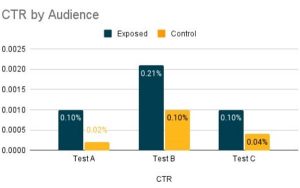— March 3, 2019

House building as metaphor for website design and development is, I admit, overused – “building a website is like building a house” just returned 5,680,000,000 results for me. Still, a solid foundation and infrastructure are critical even though it’s the shiny features (like kitchens and baths or image rotators and parallax scrolling) that get all the attention.
But while “website architecture” is a term that clearly borrows from the building trades, it deserves our attention as something other than a trite way to think about how to construct a website. And it’s precisely because a solid foundation and infrastructure are so critical to your site’s success.
What is Website Architecture?
Let’s start with a definition: Website architecture is the way we organize our content and create navigational controls to encourage site visitors to engage with the information of greatest value to them. That’s a mouthful. More succinctly, website architecture encompasses site structure, interface design, usability, and user experience.
The real question for us as marketers, though, is how do we think about website architecture in layperson’s terms and how do we implement it on our own sites?
Perspective is Important
First and foremost, be sure you’re thinking from your prospects’ perspective. This is perhaps the most critical factor in creating a website that engages your audience and gets them to take the action you desire. (Whether that’s making a purchase, contacting you, or qualifying themselves as a lead.)
Organize the site in a way that follows how they think about the problem they are trying to solve and use terminology that they use themselves. Create hubs for your key audience segments. These can be different industries, different types of organizations within an industry, even different roles within the organizations you seek to do business with. Speak their language as specifically as possible and you’ll get their attention.
Balance Ease of Access with Content Density
You’re an expert at what you do. You have deep experience. Naturally, you have a lot to say about what you’ve seen work and what you’ve seen fail. Trouble is, nobody wants to hear all of that. Until they do.
What that means is, you’ve got to balance your audience’s desire to get the top-line, big-picture information in quick, easy-to-digest chunks with their need to dig deeper and learn more before making a decision.
So, putting everything on your home page is right out. As is slicing and dicing content so finely that the content of interest to late-funnel prospects is 6 or 8 clicks deep.
Ideally, you’ll build your site with digestible overview pages that lead to pages devoted to one aspect of the solution you’re providing. An additional level can (and often should) be available for those who want to dig into things like the underlying research that drives your solution.
Your architecture here should be based on the nature and structure of conversations with prospects. You want to let them navigate easily through your website in the same way they want to proceed through a buying conversation with you.
Think Hard So Your Visitors Don’t Have To
If you haven’t read Steve Krug’s book, Don’t Make Me Think, head to your local bookstore (as soon as you’re done reading this article) and order it. (Or go to Steve’s website.) It might well be the best book on web usability ever written. And ultimately, usability is probably the primary consideration in considering a website architecture’s success. (He’s also got a great follow-up book on how to do usability testing. It’s called, Rocket Surgery Made Easy.
The takeaway is that you want to surprise and delight your target audience with your ideas and your expertise, not with your website’s navigation and structure. That should just feel natural. Here’s an example: unless your audience is super hip, you probably want to call your contact page “Contact” rather than “Hit Us Up” or anything cheeky like that.
If you maintain consistency from section to section in terms of your perspective, your content density, and your simplicity, you’ll increase your chances of seeing a positive return on your website investment.
Digital & Social Articles on Business 2 Community
(63)
Report Post






